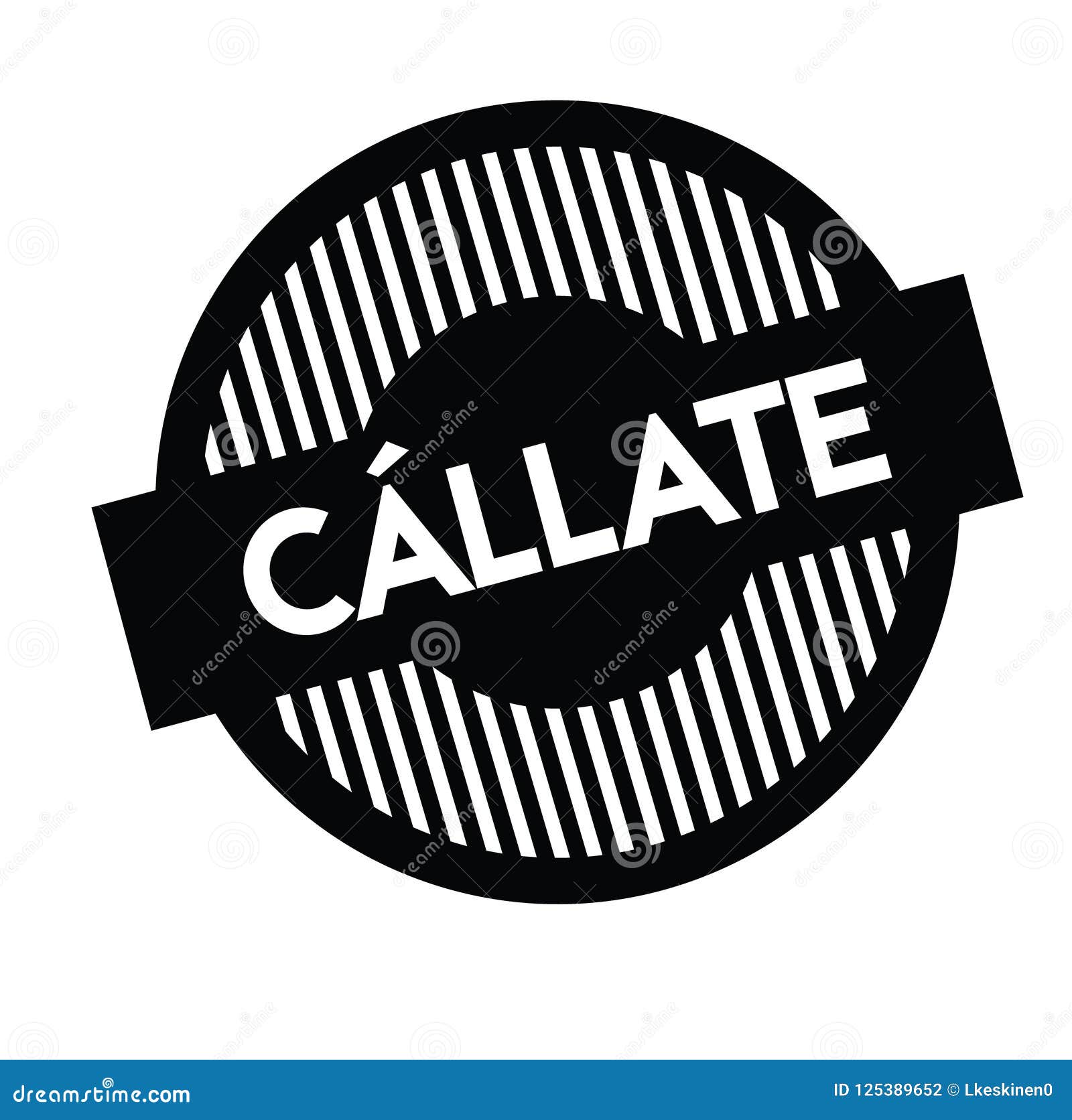Have you ever wondered how to tell someone to "shut up" in Spanish? Maybe you're watching a Spanish movie, or maybe you're just curious about the language. Whatever the reason, learning this phrase can be both fun and useful. In this article, we'll explore different ways to express "shut up" in Spanish, along with some cultural tips to make sure you use it correctly without offending anyone. Let's dive right in!
When it comes to learning languages, there's always that one phrase that catches our attention. For many, "shut up" is one of those phrases that seems simple but has layers of meaning depending on context. If you're here because you want to know how to say "girl shut up" in Spanish, you're in the right place. We'll break it down step by step so you can use it like a pro.
But wait, before we get too deep into the nitty-gritty, let's talk about why this phrase matters. Language isn't just about words; it's about understanding the culture behind those words. Saying "shut up" in Spanish might sound straightforward, but there are nuances you need to know. Stick around, and I'll show you how to master this phrase like a native speaker.
- Drake Diss Track Leak The Untold Story Behind The Hype
- Kenadie Schultz Rising Star Inspiring Journey And Everything You Need To Know
Understanding the Basics of "Shut Up" in Spanish
Alright, let's start with the basics. The most common way to say "shut up" in Spanish is "cállate." It's a direct translation and is widely used in everyday conversations. However, just like in English, the tone and context matter a lot. If you're joking around with friends, "cállate" can be playful. But if you're angry or upset, it can come across as rude.
Here's a quick breakdown:
- Cállate: The most common way to say "shut up."
- Cállense: Used when telling a group of people to shut up.
- Calla: A softer version of "shut up," often used in informal settings.
Now, if you're specifically looking to say "girl shut up" in Spanish, you can combine "girl" (chica) with "shut up" (cállate). So, it would be "chica, cállate." Easy, right? But hold on, there's more to it than just combining words.
- Iphone Vs Android The Ultimate Showdown Youve Been Waiting For
- Hazbin Hotel Oc Challenge Your Ultimate Guide To Creating Memorable Characters
Why Context Matters
Context is key when using phrases like "shut up." In Spanish-speaking cultures, directness can sometimes be seen as rude, especially if you're addressing someone older or in a formal setting. For example, saying "chica, cállate" to your friend might be fine, but saying it to your boss or a stranger could get you into trouble.
Here are a few tips to keep in mind:
- Use "cállate" sparingly in formal situations.
- If you're unsure, opt for a softer version like "calla" or "por favor, no hables."
- Always consider the relationship between you and the person you're addressing.
By understanding the cultural context, you can use this phrase effectively without offending anyone. Let's move on to some variations and alternatives.
Exploring Alternatives to "Cállate"
While "cállate" is the most straightforward way to say "shut up," there are plenty of other options you can use depending on the situation. These alternatives might not be direct translations, but they convey a similar meaning in a more nuanced way.
1. Calla un poco
This phrase translates to "shut up a little" or "be quiet for a moment." It's a great option if you want to soften the impact of "cállate." You might use this when you need someone to tone it down without being too harsh.
2. Por favor, no hables
This is a polite way of asking someone to stop talking. The addition of "por favor" makes it sound more respectful, which is perfect for formal situations or when addressing someone older.
3. Guárdalo para ti
This phrase means "keep it to yourself" and is often used when someone is saying something inappropriate or unnecessary. It's a bit more indirect than "cállate" but still gets the point across.
As you can see, there are plenty of ways to express "shut up" in Spanish without sounding too aggressive. The key is to choose the right phrase based on the context and your relationship with the person you're addressing.
Regional Differences in Spanish
One thing you need to know about Spanish is that it varies significantly across different regions. What works in Spain might not work in Mexico, and what's acceptable in Argentina might be considered rude in Colombia. Let's take a look at some regional differences when it comes to saying "shut up."
Spain
In Spain, "cállate" is the go-to phrase for "shut up." However, in more formal settings, you might hear "por favor, no hables" or "calla un poco." Spaniards tend to be more direct in their communication, so "cállate" is generally accepted even in semi-formal contexts.
Mexico
Mexicans are known for their humor and playful banter, so "cállate" is often used in a lighthearted way. However, if you're in a formal setting or addressing someone older, you might want to opt for a softer version like "calla" or "por favor, no hables."
Colombia
In Colombia, politeness is key. While "cállate" is understood, it's not commonly used in everyday conversations. Instead, Colombians might say "por favor, no hables" or "calla un poco" to avoid coming across as rude.
Understanding these regional differences can help you navigate conversations more effectively, no matter where you are in the Spanish-speaking world.
How to Use "Girl Shut Up" in Spanish
Now that we've covered the basics and explored some alternatives, let's focus on how to say "girl shut up" in Spanish. As mentioned earlier, the most direct translation would be "chica, cállate." However, depending on the context, you might want to soften it a bit.
Chica, calla un poco
This phrase translates to "girl, be quiet for a moment" and is a great option if you want to sound less aggressive. It's perfect for casual conversations with friends or in situations where you need someone to tone it down without being too harsh.
Por favor, chica, no hables
If you're in a formal setting or addressing someone older, this polite version is the way to go. It shows respect while still conveying the message that you want the person to stop talking.
Remember, the key is to adapt your language to the situation. Whether you're hanging out with friends or attending a business meeting, choosing the right phrase can make all the difference.
Practical Tips for Learning Spanish
Learning how to say "shut up" in Spanish is just the beginning. If you're serious about mastering the language, here are some practical tips to help you along the way:
1. Practice with Native Speakers
There's no better way to improve your Spanish than by practicing with native speakers. Whether it's through language exchange programs or online platforms, interacting with real people will help you understand the nuances of the language.
2. Watch Spanish Movies and TV Shows
Immersing yourself in Spanish media is a great way to learn new phrases and improve your listening skills. Plus, it's a lot of fun! Try watching movies or TV shows with subtitles to help you follow along.
3. Use Language Apps
There are plenty of language apps available that can help you learn Spanish at your own pace. Apps like Duolingo, Babbel, and Rosetta Stone offer interactive lessons that make learning fun and engaging.
By incorporating these tips into your daily routine, you'll be speaking Spanish like a pro in no time!
Common Mistakes to Avoid
Learning a new language can be challenging, and it's easy to make mistakes along the way. Here are a few common mistakes to watch out for when saying "shut up" in Spanish:
1. Overusing "Cállate"
While "cállate" is a common phrase, overusing it can make you sound rude or aggressive. Try to vary your language and use softer alternatives when appropriate.
2. Ignoring Context
As we've discussed, context is crucial when using phrases like "shut up." Always consider the situation and your relationship with the person you're addressing before choosing your words.
3. Forgetting Politeness
In many Spanish-speaking cultures, politeness is highly valued. Even if you're using a phrase like "shut up," adding "por favor" can make a big difference in how it's perceived.
Avoiding these mistakes will help you communicate more effectively and avoid offending anyone unintentionally.
Conclusion: Mastering "Shut Up" in Spanish
In conclusion, learning how to say "shut up" in Spanish is a valuable skill that can come in handy in various situations. Whether you're traveling, studying, or just curious about the language, understanding this phrase and its cultural context can enhance your communication skills.
Here are the key takeaways:
- The most common way to say "shut up" is "cállate."
- Use softer alternatives like "calla" or "por favor, no hables" in formal settings.
- Be mindful of regional differences and adapt your language accordingly.
- Practice regularly to improve your Spanish skills.
Now that you know how to say "girl shut up" in Spanish, it's time to put your new knowledge into practice. Share this article with your friends, leave a comment below, and let me know how you're using your Spanish skills. Happy learning!
Table of Contents
- Officer Brian Shields Waterford Mi The Unsung Hero Protecting Our Streets
- Oreo Dunkaroos The Sweet Comeback Youve Been Waiting For


